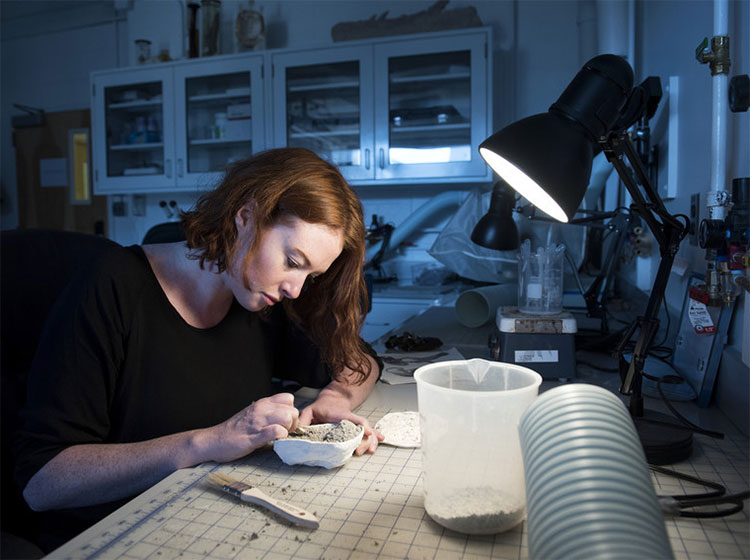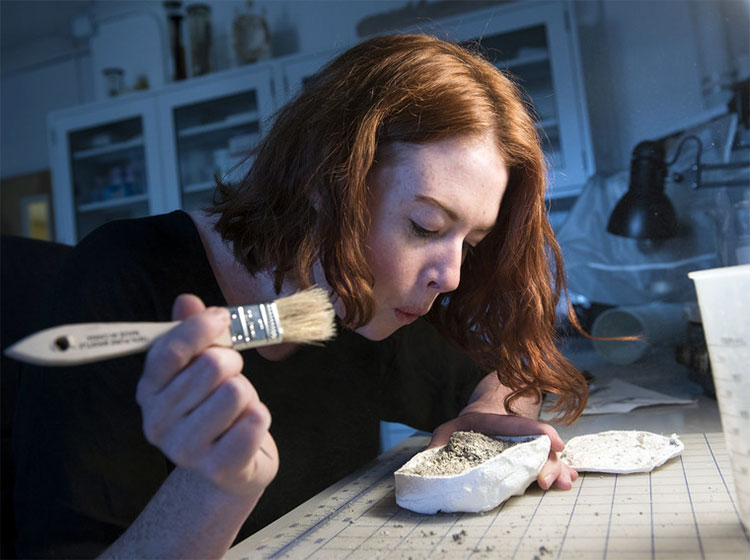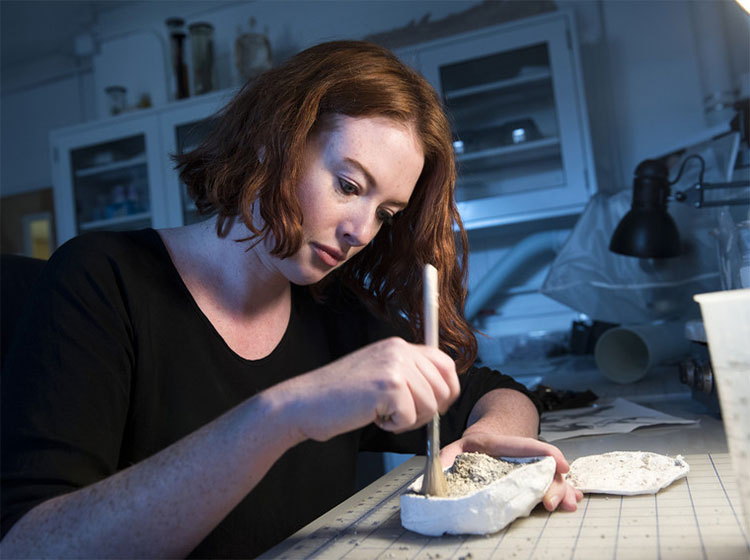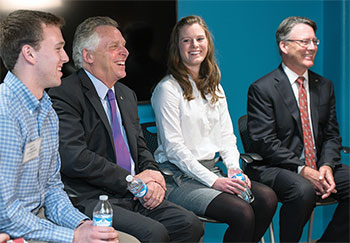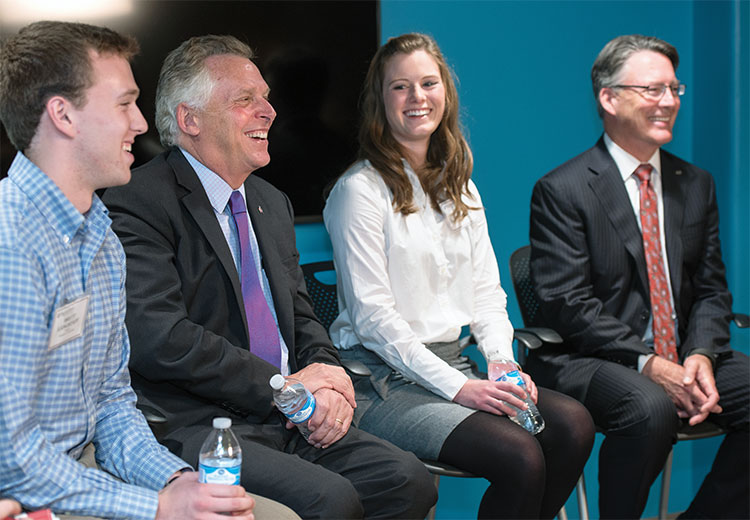Gaze upon a prehistoric fossil or a dinosaur skeleton, and you're bound to imagine the animal alive—its musculature, movements, behavior, color, and more.
Caitlin Colleary may be able to help you do more than imagine.
Prior to beginning her doctoral study in vertebrate paleontology at Virginia Tech, Colleary, as part of her master's work at the University of Bristol, led a multi-university study that reveals how pigment can be detected in mammal fossils, a finding that may end the guesswork in determining the colors of extinct species.
Marking the first time the colors of extinct mammals have been described through fossil analysis, the researchers discovered the reddish brown hue of two extinct bat species from fossils dating back about 50 million years. The techniques can be used to determine color from well-preserved animal fossils that are up to 300 million years old, researchers said.
"We have now studied the tissues from fish, frogs, and tadpoles; hair from mammals; feathers from birds; and ink from octopus and squids," said Colleary, the lead author of the study, which involved scientists from the United States, United Kingdom, Germany, Ethiopia, and Denmark, and was published in a fall 2015 issue of the Proceedings of the National Academy of Sciences. "They all preserve melanin, so it's safe to say that melanin is really all over the place in the fossil record. Now we can confidently fill in some of the original color patterns of these ancient animals."
The researchers determined that microscopic structures traditionally believed to be fossilized bacteria are in fact melanosomes—organelles within cells that contain melanin, the pigment that gives color to hair, feathers, skin, and eyes. Fossil melanosomes were first described in a fossil feather in 2008 by Jakob Vinther, a molecular paleobiologist at the University of Bristol and the senior author of the study.
Using an instrument called a time-of-flight secondary ion mass spectrometer, scientists identified the molecular makeup of the fossil melanosomes to compare with modern melanosomes. Researchers also replicated the conditions under which the fossils formed to identify the chemical alteration of melanin, subjecting modern feathers to high temperatures and pressures to better understand how chemical signatures changed during millions of years of burial.
"By incorporating these experiments, we were able to see how melanin chemically changes over millions of years, establishing a really exciting new way of unlocking information previously inaccessible in fossils," Colleary said.
More about Colleary's research →
Tech road-tests connected vehicles on interstate
Video by J. Scott Parker and Jerry Scheeler
Visual and Broadcast Communications
Cars outfitted with automated- and connected-vehicle technology by Virginia Tech Transportation Institute (VTTI) researchers traveled a 10-mile stretch of interstate in Northern Virginia during testing conducted in mid-October 2015. The closed testing, which occurred during the regular midday reversal of the Interstate 395 express lanes, did not affect travel.
U.S. Sen. Mark Warner, U.S. Department of Transportation Assistant Secretary for Research and Technology Greg Winfree, Virginia Tech President Timothy D. Sands, and Virginia Secretary of Technology Karen Jackson were among officials who boarded sedans outfitted and "driven" by VTTI researchers.
The automated vehicle demonstrated lane-changing and braking responses to staged scenarios, including construction workers in the roadway, sudden traffic slowdowns, and passing emergency vehicles. The connected vehicle, which was equipped both with dedicated short-range communications known as DSRC and with cellular technology, provided advanced alerts to drivers in similar scenarios using vehicle-to-vehicle and vehicle-to-infrastructure communications.
"The growing use of automated and connected technologies is no longer a matter of if, but when," Warner said. "It is exciting that Virginia is positioned to be a leader in the development of this game-changing technology and the new jobs and investment that will result."
Charting the future
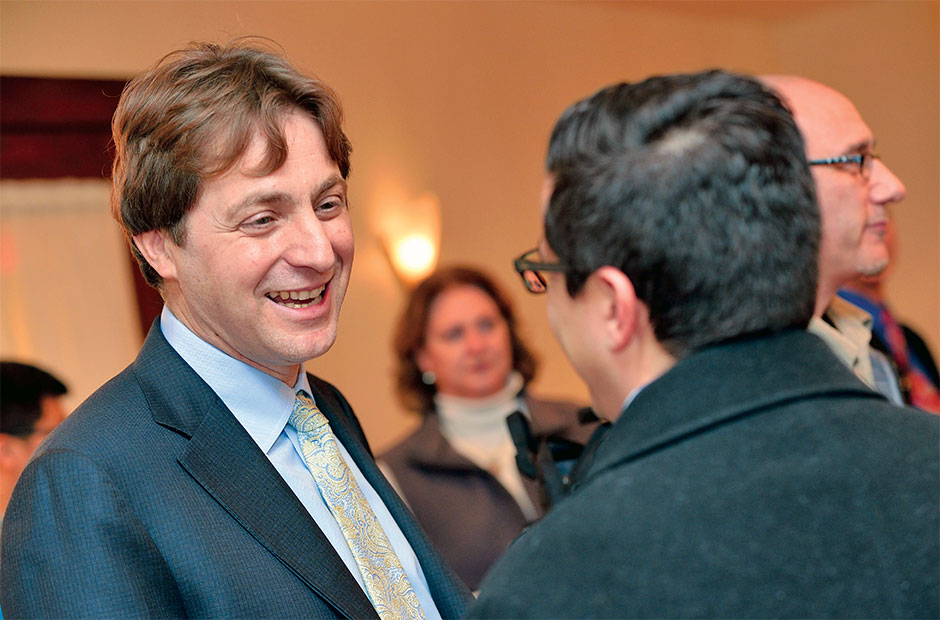
Executive Vice President and Provost Thanassis Rikakis
At two town hall forums in November and December, Executive Vice President and Provost Thanassis Rikakis and President Timothy D. Sands gathered faculty input on a key aspect of the Beyond Boundaries visioning process—destination areas. In progress is a process to identify, define, and strengthen those areas—the signature elements of the university's curriculum and research—that will differentiate Virginia Tech as a leading university, advance scholarship, and attract students and faculty.
Learn more about the destination areas and the broader visioning process
Moment
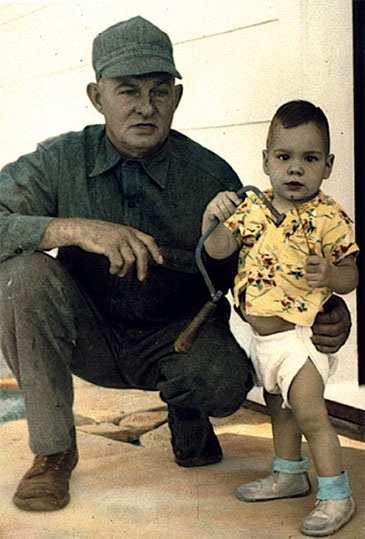
Toddler Brent Opell with his grandfather, who introduced him to how things work: "I like to show this picture to my students and tell them, 'That's how we learned about dangerous things like sharp saw blades,'" Opell said. "Give us something, and we'll learn about it one way or another."

Toddler Brent Opell with his grandfather, who introduced him to how things work: "I like to show this picture to my students and tell them, 'That's how we learned about dangerous things like sharp saw blades,'" Opell said. "Give us something, and we'll learn about it one way or another."

Toddler Brent Opell with his grandfather, who introduced him to how things work: "I like to show this picture to my students and tell them, 'That's how we learned about dangerous things like sharp saw blades,'" Opell said. "Give us something, and we'll learn about it one way or another."

Toddler Brent Opell with his grandfather, who introduced him to how things work: "I like to show this picture to my students and tell them, 'That's how we learned about dangerous things like sharp saw blades,'" Opell said. "Give us something, and we'll learn about it one way or another."
Oh, the webs they weave
As a biology doctoral student at Harvard University, Brent Opell remembers thinking that it made little sense for someone setting out on a career to study spiders to be prescribed a class in vertebrate evolution.
"It was the hardest course I'd ever taken," said Opell, a professor of biological sciences in the College of Science and a 2015 William E. Wine Award winner for teaching excellence. "It was essentially vertebrate paleontology taught by people who were looking at functional morphology—how to understand the structure of an animal and how it functions and how that understanding could be applied from living animals to fossils to understand how dinosaurs, for instance, would have acted."
Although that leap from invertebrates to vertebrates seemed counterintuitive, Opell was snagged. "Somehow, this course in vertebrate evolution put together biology and something akin to mechanics—the physical aspects with the biological aspects—and it was really intriguing to me."
Over the years, Opell's study of spiders and their systems and evolution has led to valuable discoveries. His recent research on the adhesive mechanisms of webs has gained the attention of material scientists interested in bio-mimicking spider's glue for such products as environmentally friendly adhesive bandages.
Growing up in rural Indiana, Opell was drawn to "mechanical things." "When I was a high school student," he said, "my dad worked on clocks as a paying hobby, and I became an apprentice clockmaker and learned how to repair clocks. I also started repairing guns for a local sporting goods shop."
"I learned a lot of things from my grandfather about mechanics," said Opell. "I remember visiting him when I was young, and we'd go out to his shed and take stuff apart. He had cigar box after cigar box filled with parts. He was a big influence on my interest in understanding how things work."
More about Opell's work with spiders and their webs→
Cadets move into Pearson Hall
Video by J. Scott Parker
Visual and Broadcast Communications
On Nov. 14, 2015, hundreds of members of the Virginia Tech Corps of Cadets moved into Pearson Hall, the first entirely new residence hall to open on campus since New Hall West in 2009. Named in recognition of James (agricultural and applied economics '87) and Renae (family and child development '90) Pearson, the hall houses about half of the corps' cadets. Cadet leaders planned significant portions of the effort—dubbed Operation High Ground—scheduling platoon movements and organizing logistics.
Fuente tapped to lead Hokie football

Justin Fuente and his family—his wife, Jenny, and their three daughters—were welcomed to campus by Director of Athletics Whit Babcock (left) and President Timothy D. Sands (right).
Justin Fuente, who led a remarkable resurgence for University of Memphis football, was introduced at a November 2015 press conference as Virginia Tech's head coach, succeeding Frank Beamer.
Regarded as one of the rising stars in college coaching, Fuente systematically brought the Memphis program back to respectability and postseason prominence, leading the Tigers to a 19-6 record in his final two campaigns. In 2014, the Tigers won their first conference championship since 1971.
"We are thrilled to welcome Justin, Jenny, and their three daughters into our Virginia Tech family," said Director of Athletics Whit Babcock. "Justin is a very impressive individual who also happens to be one of the brightest offensive minds in college football. He elevated Memphis to unprecedented heights. His recruiting philosophy is progressive and comprehensive. Coach Fuente has displayed tremendous talent in evaluating players and developing young men as they strive to reach their full potential. Simply put, Coach Fuente exudes all the qualities that Hokies hold near and dear."
Virginia Tech Magazine App for iOS and Android

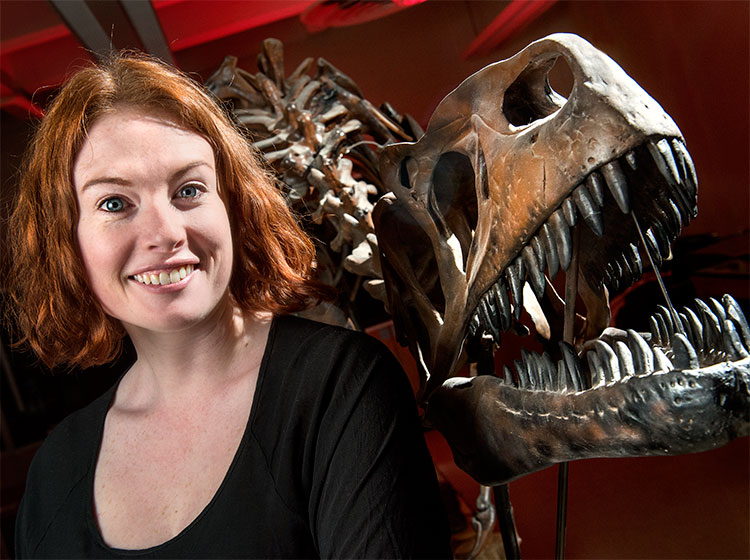 In her master's work, doctoral student Caitlin Colleary helped to unlock information in fossils millions of years old.
In her master's work, doctoral student Caitlin Colleary helped to unlock information in fossils millions of years old.
